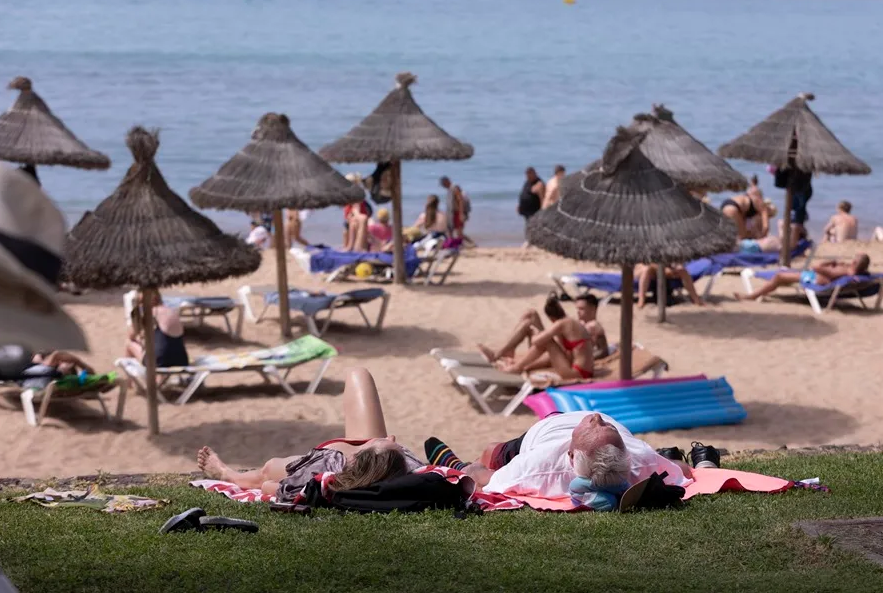The tourism sector expects an Easter with more income and occupancy than the previous one, which was already a record, despite falling this year in March, a month in which the weather can be even more unstable than in April, in view of the increase in reservations mainly from Spaniards, but also from foreign tourists.
The results tend to be “somewhat more positive” when the Easter holidays are celebrated in April, according to travel agencies, although they recognize that the expectations they have this year are “especially” good.
The Spanish Confederation of Travel Agencies (Ceav) predicts growth over Easter 2023, “although it will probably not be of the same magnitude as last year”, when (falling in April) it was 36%.
The forecasts made by the employers’ association for Easter 2024 point to a growth of between 5% and 10% in turnover compared to last year, Ceav sources tell EFE.
Along the same lines, hoteliers are “very hopeful” with the rates they are receiving for Easter, which is in line with the general trend, which places the sector 25% above the same time in 2019, according to the Spanish Confederation of Hotels and Tourist Accommodations (Cehat).
As for destinations, on a national scale, getaways can be divided into zones: the islands, the coasts, the inland tourism capitals with special relevance during these holidays and the large capitals such as Madrid or Barcelona.
Canary Islands with more reserves than Balearic Islands
Ceav has emphasized that the Canary archipelago has more reserves this Easter than the Balearic Islands, which it attributes to the weather, a factor on which the peninsular coasts also depend a lot, which is why the employers’ association believes that “they will have a surge in reserves at the last hour”.
The Tourism Board even considers that coastal tourism will have “little influence” in this festive period, whose protagonist will be the urban one and, thus, expects that hotels in cities with a greater Easter tradition and tourist capitals will reach an average occupancy of 70% throughout the week and almost 90% in its central days.
Regarding international travel, Ceav cites European capitals as the most in-demand places and also trips to the Dominican and Mexican Caribbean, in addition to observing “how certain Asian destinations are recovering strongly among those travelers who can take more vacation days.”
The online travel agency Destinia stands out among the favorite international destinations of Spaniards as Portugal, Italy and France, with cities such as Lisbon, Albufeira, Porto, London, Rome and Paris leading the preferences, and among national destinations, Salou, Benidorm, Mojácar, Cambrils or Playa del Inglés (Canary Islands).

Hoteliers also add ski resorts to this list, after the cold a few weeks ago “has left us good news in the form of snow” in the mountains.
The Sierra Nevada resort currently reaches 97 skiable kilometers, the greatest length since the 2019/20 winter, while those of the Aramón Group face the arrival of spring with the greatest ski area of the season, like that of Baqueira Beret , exceeding 150 kilometers of open slopes.
Reserves grow
Reservations in Spanish hotels for the Easter period grow 33% compared to last year and the increase in international tourism is “especially striking,” “corroborating the great attraction that Spain has for foreign travelers,” highlights the SiteMinder platform.
The United Kingdom, France, Germany, Italy and the United States are, in this order, among the countries that will provide the most clients to Spanish hotels this Easter.
Destinia points to a very similar increase in reservations, of 35% compared to the previous year, which it attributes mainly to national tourism (with a rebound of 63%), although it adds that the foreign share is also notable, representing 28%. of the total.
This leads her to affirm that the difference with Easter 2023 is that last year the boost in reservations for these dates came from foreign tourists and this time from Spaniards.
Higher prices
The increase in reservations will also impact prices in accommodation throughout Spain, due to the peak in the volume of guests, with increases that can reach 15% on the most critical dates of these holidays and in the most demanded destinations, according to SiteMinder.
The Cehat hotel association, for its part, places the average increase in rates this Easter at more than 4%, a percentage that is aligned with inflation, although it recognizes that, in some points, the increase is greater, while, in others, it has stagnated.
Destinia limits it to 2%, with an average price of around 51 euros per person per night, although, despite this, it is observed that Spaniards spend less, with an average of 44 euros, in contrast to 69 euros. that foreign visitors pay during these days.
He attributes this to the fact that, in destinations that are especially popular with foreigners such as Madrid, Palma de Mallorca and Barcelona, prices are considerably higher than those preferred by national tourists.
BY: Mian Saeed Ahmed Khan







